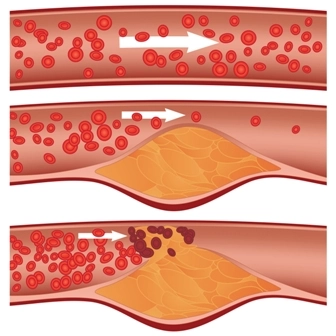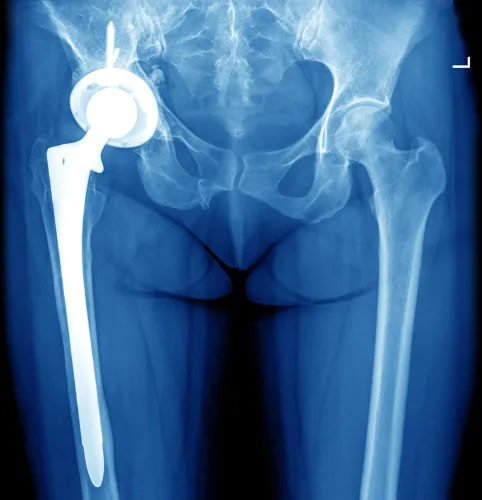Boost Your Diagnostic Skills, Code these 2 ENT Neoplasms

Apply your deductive reasoning skills to figure out these two tricky diagnoses. Coding neoplasms of the ear, nose, and throat can pose a challenge to even the most experienced coders. It requires an intricate knowledge of anatomy, scientific terminology, and the ICD-10 index. The degree of difficulty can be compounded by the fact that some of these diagnoses are non-indexable via the ICD-10 index. Fortunately, there are working algorithms in place to ease the burden of correctly coding anatomically specific neoplasms such as these. However, rather than taking a universal approach for each neoplasm, it's best to treat each diagnosis as a separate entity when deciding upon the correct ICD-10 code. Becoming an efficient and accurate ICD-10 coder requires a combination of perseverance, critical thinking, and most importantly, experience. But there are still certain tips and techniques coders of any experience level can utilize to help reach their goal of becoming an established ICD-10 coder. "Neoplasm coding offers an additional degree of difficulty due to the need to incorporate the Table of Neoplasms, rather than the ICD-10 index alone," says Lindsay Della Vella, COC, medical coding auditor at Precision Healthcare Management in Media, Pennsylvania. "Coders need to take various factors into consideration when coding neoplasms of various behaviors, such as the areas affected, primary versus secondary status, and cancer in situ," relays Della Vella. Consider the following examples to help further establishyourself as an expert coder in the field of ENT neoplasm coding. Example 1: Mucoepidermoid carcinoma Before attempting to find the correct diagnosis code, you want to make sure you've got a firm understanding of the type of neoplasm you're dealing with. In this case, you know the behavior of the neoplasm, as any neoplasm labeled as a carcinoma can be identified as malignant. From there, it gets a little trickier. You won't find the scientific term anywhere in the Table of Neoplasms or ICD-10 index, so you've got to come up with another game plan to determine the most accurate diagnosis code available. Some coders might opt to take the approach of dividing the diagnosis between prefix, root word, and suffix. "Coders need to be careful when going this route," advises Barry Rosenberg, MD, chief of radiology at United Memorial Medical Center in Batavia, New York. "If a coder does not have a fundamental understanding of the anatomy behind the codes they are researching, they may wind up reaching some inaccurate conclusions," says Rosenberg. Breaking apart this diagnosis, you see that the prefix, muco-, is defined by "Stedman's Medical Dictionary" as "mucus, mucous (mucous membrane)." Epidermoid, on the other hand, is defined as "resembling epidermis." Based on these two definitions, the malignancy might pertain to any one of numerous mucus-producing organs. Since both the respiratory and digestive tracts produce mucus to line the passageways, this route seemingly leaves the coder at a dead end. Keep it Simple, Use a Medical Dictionary Fortunately, you will rarely, if ever, have to rely on prefixes and root words to identify a neoplasm. Most medical dictionaries have definitions for any and all neoplasm diagnoses in existence. "Stedman's Medical Dictionary" identifies a mucoepidermoid carcinoma as "most commonly a salivary gland carcinoma of low grade malignancy composed of mucous, epidermoid, and intermediate cells, with mucous cells abundant only in low-grade carcinoma; recurrence is frequent, and high-grade carcinomas metastasize to cervical nodes." While this definition offers a substantially higher degree of specificity than you had previously, you're still not left with any definitive location of the cancer. This is where the provider's documentation comes into play. Whether you are coding from an operative note or an initial consultation, the provider should offer enough elaboration to identify not only that the carcinoma is of salivary gland origin, but the specific salivary gland as well. Since mucoepidermoid carcinomas can also pertain to the thyroid glands, this documentation is critical to reach the correct diagnosis code. Assuming that you are dealing with a mucoepidermoid carcinoma of the parotid gland, the coding is relatively simple from here. "Carcinoma" in the ICD-10 index leads you to "see also Neoplasm, by site, malignant." Next, you will identify malignant neoplasm of parotid gland as C07 (Malignant neoplasm of parotid gland). Make sure to evaluate the options of a secondary code for tobacco and alcohol use, if applicable. Example 2: Verrucous carcinoma Using the knowledge from the previous example, coding a verrucous carcinoma should feel like a less daunting task. Again, you will not find verrucous carcinoma in either the ICD-10 index nor the Table of Neoplasms, so all you know initially is that you are dealing with a neoplasm of malignant behavior. Knowing that you should not rely on the prefix, suffix, or root words, your next step is to find the clinical definition for verrucous carcinoma. "Stedman's Medical Dictionary" defines a verrucous carcinoma as "a well-differentiated papillary squamous cell carcinoma, especially of the oral cavity or penis, which may invade locally but rarely metastasizes; the usual cytologic features of malignancy are absent. Genital verrucous carcinoma may be associated with preexisting condyloma acuminatum." Rely on Your Deductive Reasoning Skills For some, this definition might offer more questions than answers. Specifically, there might be confusion surrounding the term "well-differentiated" as it pertains to squamous cell carcinoma. According to cancer.gov, the term "well-differentiated" as it pertains to cancer is used to describe cancer cells that "look more like normal cells under a microscope and tend to grow and spread more slowly than poorly differentiated or undifferentiated cancer cells." Without a foundational understanding of this term, a coder can safely assume that they are dealing with squamous cell carcinoma of the oral cavity. The provider should always have further documentation of the exact location within the oral cavity, but in the case that the provider does not elaborate further, you should use the code C06.9 (Malignant neoplasm of mouth, unspecified). Note: You may be unsure of whether the option of "ill-defined" is a better choice than the unspecified code when searching under Malignant à oral (cavity). In thiscase, "ill-defined" implies that there is still some sort of definition of the anatomic location, rather than none at all. If the provider gives a vague description of the site, then you may opt for code C14.8 (Malignant neoplasm of overlapping sites of lip, oral cavity and pharynx) instead. Keep in mind: When a neoplasm has not yet been evaluated by pathology and has not yet made a determination on behavior, do not code the neoplasm as "of uncertain behavior." Instead, you should code the neoplasm as "of unspecified behavior" until the pathology offers a final determination. If pathology is unable appropriately identify the neoplasm's behavior, then you may code using the designation "of uncertain behavior."




